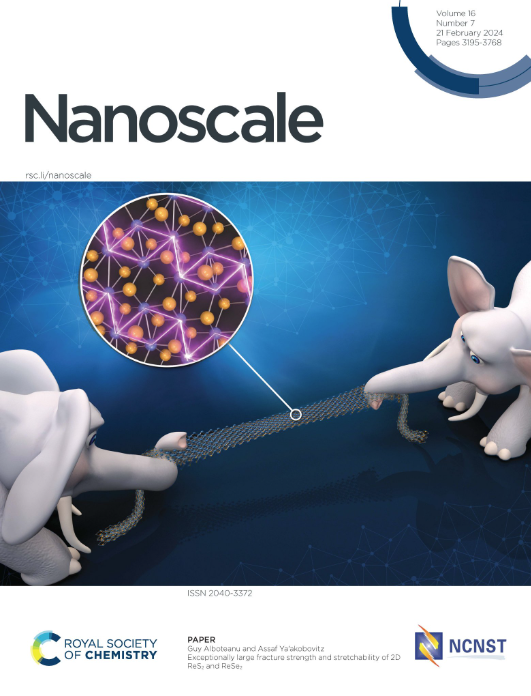在非极性溶剂中控制快速生长银纳米立方体的形成
IF 5.8
3区 材料科学
Q1 CHEMISTRY, MULTIDISCIPLINARY
引用次数: 0
摘要
最有效的纳米结构的关键是深刻理解和控制影响反应机制的所有因素。为了充分发挥在非极性溶剂混合物中合成银纳米立方的潜力,对决定结果的因素进行了彻底的研究。在这种热注射方法中,银前驱体与Cl前驱体反应形成AgCl并繁殖孪晶(MT)银纳米颗粒。然后AgCl被还原成单晶Ag纳米粒子,而MT纳米粒子被氧化。结果,单晶长成纳米立方体。揭示了以前未确定的因素,如Fe(III)离子的催化影响和HCl的原位形成,导致氯化物含量不明。通过控制Fe(III)离子的量和加入稳定的Cl源,可获得较高的重现性。深入研究并结合氯浓度与温度和氧化蚀刻的影响,可以在40至100 nm范围内调整纳米立方的边缘长度,并改善其均匀性。这些发现为在短反应时间内生产边缘锋利、多分散性低、尺寸可调、光学性质可调的非极性银纳米立方体提供了可靠的方案。本文章由计算机程序翻译,如有差异,请以英文原文为准。
Controlling the Formation of Fast-Growing Silver Nanocubes in Non-Polar Solvents
The key to the most efficient nanostructures is a deep understanding and control of all factors influencing the reaction mechanism. To realize the full potential of a synthesis of Ag nanocubes in a non-polar solvent mixture, the factors that determine the results are thoroughly investigated. In this hot-injection approach, an Ag precursor reacts with a Cl precursor to form AgCl and multiply twinned (MT) Ag nanoparticles. The AgCl is then reduced to single crystalline Ag nanoparticles while the MT nanoparticles are oxidized. As a result, the single crystals grow into nanocubes. Previously unidentified factors like the catalytic influence of Fe(III) ions and the in situ formation of HCl, which leads to an undefined chloride content, are revealed. A high reproducibility is achieved by controlling the amount of Fe(III) ions and adding a stable Cl source. Thoroughly investigating and combining the effects of chloride concentration with temperature and oxidative etching allows for adjusting the edge length of the nanocubes in the range of 40 to 100 nm and improving their uniformity. These findings lead to a robust protocol for producing non-polar silver nanocubes with sharp edges, low polydispersity, tunable size, and thus tunable optical properties in a short reaction time.
求助全文
通过发布文献求助,成功后即可免费获取论文全文。
去求助
来源期刊

Nanoscale
CHEMISTRY, MULTIDISCIPLINARY-NANOSCIENCE & NANOTECHNOLOGY
CiteScore
12.10
自引率
3.00%
发文量
1628
审稿时长
1.6 months
期刊介绍:
Nanoscale is a high-impact international journal, publishing high-quality research across nanoscience and nanotechnology. Nanoscale publishes a full mix of research articles on experimental and theoretical work, including reviews, communications, and full papers.Highly interdisciplinary, this journal appeals to scientists, researchers and professionals interested in nanoscience and nanotechnology, quantum materials and quantum technology, including the areas of physics, chemistry, biology, medicine, materials, energy/environment, information technology, detection science, healthcare and drug discovery, and electronics.
 求助内容:
求助内容: 应助结果提醒方式:
应助结果提醒方式:


